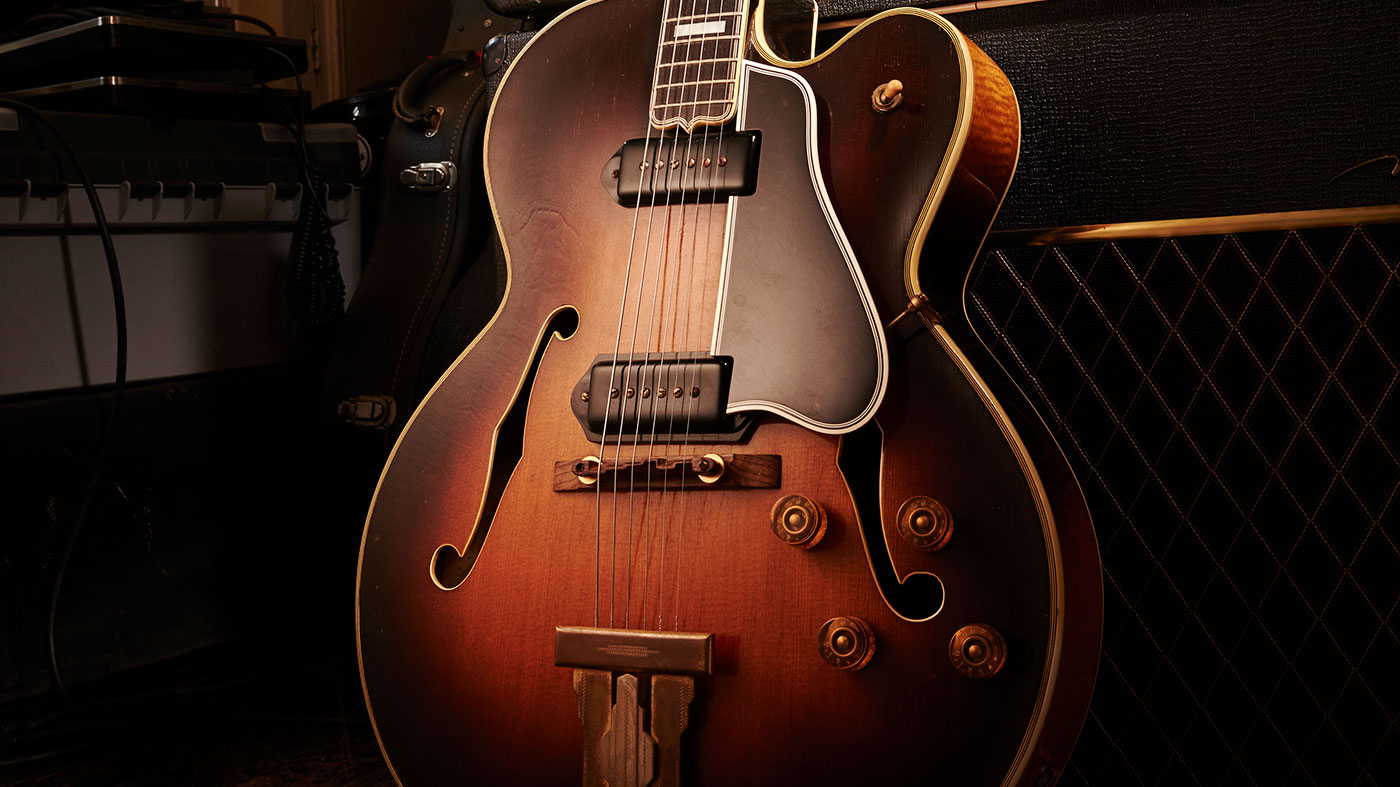
Gibson’s L-5 was first introduced in late 1922, the brainchild of the company’s luthier, Lloyd Loar.
Original pure acoustic models were 16 inches wide and sported a birch back and maple back and sides, single bound ebony fingerboard, dot inlays and a triple-bound peghead.
This Sunburst model is from 1952 and, we’re told, is one of only 29 made in that year
The model underwent several upgrades, including gold-plated hardware, a maple back and block inlays. The most significant advances were the slight increase to body size, which occurred in 1934 when Gibson added an inch to the model’s girth, and in 1939, when the model received a rounded cutaway and the model that we’re familiar with today was born.
Renamed the L-5C, the guitar became a favourite among the big band jazzers of the 1940s, its unamplified volume and projection able to cut through the horn sections of the day.
The first pickups to appear on the L-5 (now called the L-5CES) were P-90s in 1951, which were upgraded to Alnico V pickups in 1954 and humbuckers in late ’57.
Further additions to the range were made in the form of the L-5 Studio and L-5S solid body, but the original CES still remains close to the hearts of modern day jazzers.
This Sunburst model is from 1952 and, we’re told, is one of only 29 made in that year. It sports an almost regal charm and is a remarkably clean version of one of Gibson’s landmark jazz guitars.
Want all the hottest music and gear news, reviews, deals, features and more, direct to your inbox? Sign up here.
With thanks to the New Kings Road Guitar Emporium for giving us access to this beautiful instrument.
Guitarist is the longest established UK guitar magazine, offering gear reviews, artist interviews, techniques lessons and loads more, in print, on tablet and on smartphones
Digital: http://bit.ly/GuitaristiOS
If you love guitars, you'll love Guitarist. Find us in print, on Newsstand for iPad, iPhone and other digital readers


